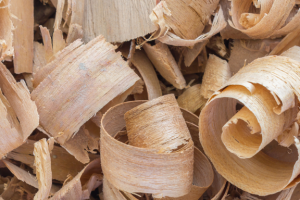It’s a strange day when economic growth slides 1.9% in a quarter and the commentariat barely notices. That was the experience when Australia’s September quarter GDP data was released. The reason is clear. The result was already baked in, signalled by the lockdowns in Sydney and Melbourne and really just another moment in these strangest of times.
If nothing else, the falls in quarterly GDP are signal markers of the pandemic and its observable economic effects on a quarter-by-quarter basis. The 1.9% quarterly fall from July to September 2021 was the third negative quarter of the last seven quarters and fed into an annualised GDP of 3.9%, which is decidedly healthy.
One reason the numbers were treated with calm is most commentators and bank forecast economists expected the rate to fall by about 2.1%. Anything better was positive news. Potentially, some suggested, lockdown resilience is being created in the economy, contributing to better results in downturns.
In any event, expectations are for a strong and cashed up rebound in the December quarter.

A rebound seems likely, because as Greg Jericho showed in The Guardian, GDP is now below trend and might have quite a bit of room to move up over the next year. His chart here demonstrates the point and also shows a trend towards recovery. Good news, for the most part.

There are still headwinds to Australian growth and some may prove quite stiff and challenging breezes.
First up, Government remains an important contributor to growth, with its expenditure at +0.8%. However, because of the lockdowns, household consumption was down -2.5%. This flowed into imports which fell, and therefore provided a positive contribution of +0.8%.
The net result was a big increase in household savings.

This increase in savings is what policy makers are hoping will be drawn down in coming months as the government contribution reclines. So, growing the economy could rely on a flip from Government to household expenditure.
That makes reasonable sense and could even happen. But, as Ronald Mizen pointed out in the Australian Financial Review, this could lead to further inflationary pressure. When households spend and create demand – especially for goods that are struggling to make their way into Australia right now – that could overheat the economy and shift prices up too quickly. That is especially a risk in the low interest rate environment currently being enjoyed and that still looks likely to last until at least the second half of 2023.
By contrast, Coolabah Capital’s Christopher Joye, also writing in the Australian Financial Review, suggests Australia’s core inflation and wages growth has been expanding at a fairly benign 2.0% per annum. He says while there has been a sharp rise in core inflation for the September quarter, wages growth is still subdued, suggesting that the inflationary pressure might be transitory. By contrast the US economy is experiencing both inflationary pressure and strong wages growth suggesting inflation there is no longer transitory.
We will have to wait for the December GDP results to see if the RBA forecasts are holding up and whether its Mizen’s inflationary or Joye’s transitory view that holds most water.
Returning to the specific contributors to growth in the September quarter, the chart here shows business investment, alterations and additions and exports keeping their head above water in the September quarter. Good results, all of them, in a period where GDP fell 1.9%.

Taking a short peak at business investment, despite the roller coaster of recent quarters, the annualised growth of business investment is still 2.0% per annum – stable from the prior quarter.

There are downside pressures on business investment – inflation, a faltering exchange rate (and that will be inflationary!) and of course, delays in getting new machinery and equipment into the country. However, the headline is that business is seeking to invest for the future and across the economy, that is very positive news.
There is plenty to keep us interested in the economic growth data right now.



